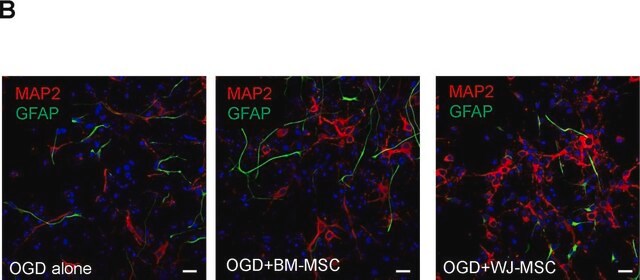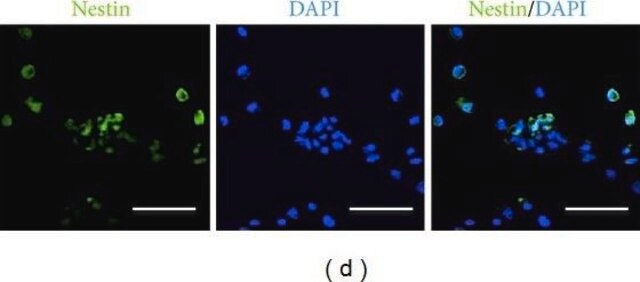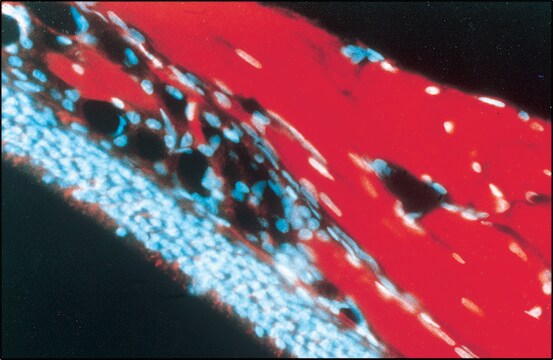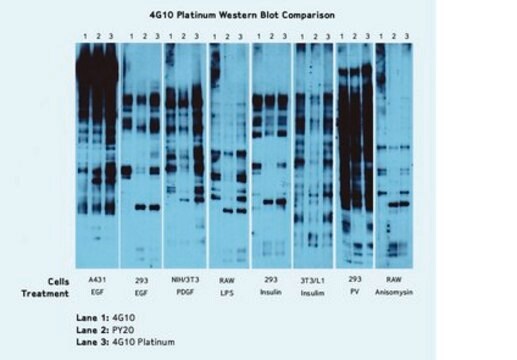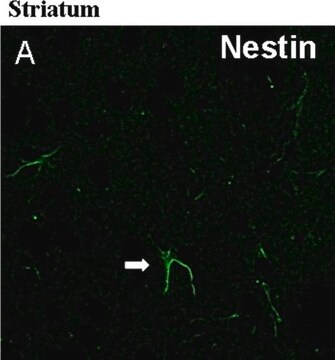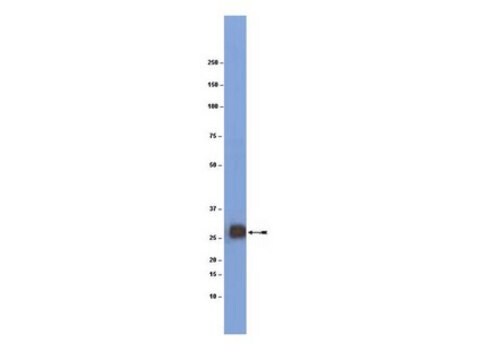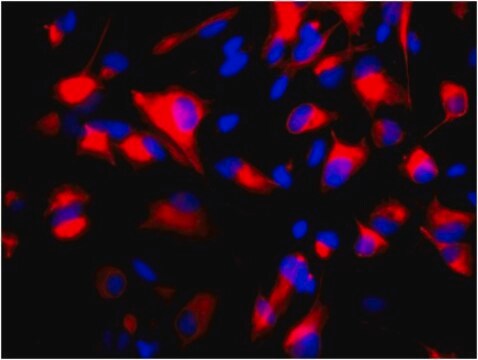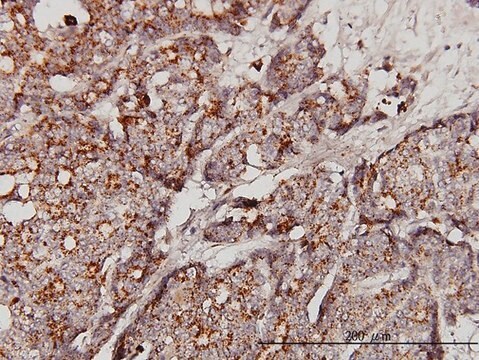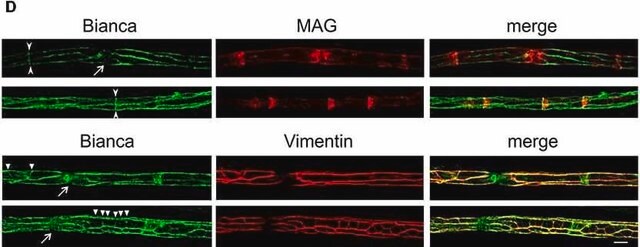MAB366
Anti-MAP1B Antibody, clone AA6
ascites fluid, clone AA6, Chemicon®
Synonim(y):
MAP5
About This Item
Polecane produkty
pochodzenie biologiczne
mouse
Poziom jakości
forma przeciwciała
ascites fluid
rodzaj przeciwciała
primary antibodies
klon
AA6, monoclonal
reaktywność gatunkowa
feline, chicken, hamster, rat, bovine, mouse
producent / nazwa handlowa
Chemicon®
metody
immunohistochemistry: suitable
western blot: suitable
izotyp
IgG1
numer dostępu NCBI
numer dostępu UniProt
Warunki transportu
wet ice
docelowa modyfikacja potranslacyjna
unmodified
informacje o genach
human ... MAP1B(4131)
Specyficzność
Monoclonal Anti-MAP1b is immunospecific for MAP1b (also known as MAP5, MAPIX or MAP1.2; Riederer et al., 1986; Tucker et al., 1988) as determined by an immunoblot assay. Addition of antibody to microtubule proteins before polymerization results in abnormally short (but otherwise morphologically normal) microtubules.
Immunogen
Zastosowanie
Immunohistochemistry
Optimal working dilutions must be determined by the end user.
Neuroscience
Neuronal & Glial Markers
Neurofilament & Neuron Metabolism
Postać fizyczna
Przechowywanie i stabilność
Informacje prawne
Oświadczenie o zrzeczeniu się odpowiedzialności
Nie możesz znaleźć właściwego produktu?
Wypróbuj nasz Narzędzie selektora produktów.
Kod klasy składowania
12 - Non Combustible Liquids
Klasa zagrożenia wodnego (WGK)
nwg
Temperatura zapłonu (°F)
Not applicable
Temperatura zapłonu (°C)
Not applicable
Certyfikaty analizy (CoA)
Poszukaj Certyfikaty analizy (CoA), wpisując numer partii/serii produktów. Numery serii i partii można znaleźć na etykiecie produktu po słowach „seria” lub „partia”.
Masz już ten produkt?
Dokumenty związane z niedawno zakupionymi produktami zostały zamieszczone w Bibliotece dokumentów.
Nasz zespół naukowców ma doświadczenie we wszystkich obszarach badań, w tym w naukach przyrodniczych, materiałoznawstwie, syntezie chemicznej, chromatografii, analityce i wielu innych dziedzinach.
Skontaktuj się z zespołem ds. pomocy technicznej